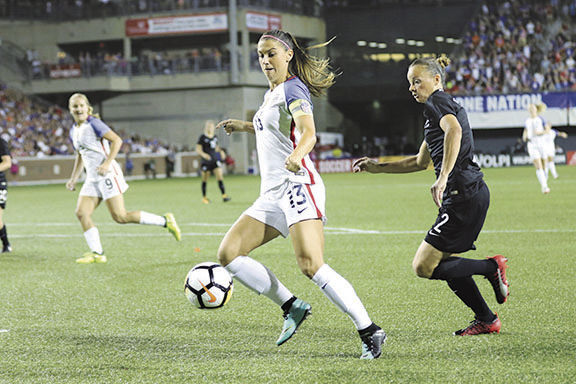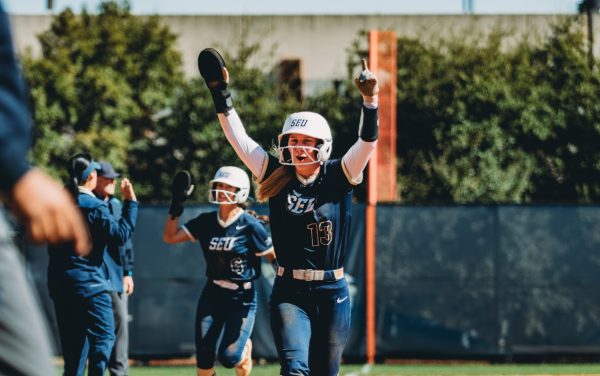Despite US men’s soccer woes, women look to defend title

Forward Alex Morgan
For the first time since 1986, the United States won’t be going to the World Cup. Tuesday, Oct. 10 was a devastating moment for the United States men’s national soccer team and their fans. That night, the men’s national team fell to Trinidad and Tobago 2-1, eliminating them from the upcoming 2018 World Cup to be hosted in Russia. In that moment, history would be made, tears would be shed and anger would flare.
While the men’s team sits and reflects on their embarrassing loss to a team who didn’t qualify, the women’s team prepares for their own World Cup, which will begin October 2019. The women’s World Cup is set to take place in France from June 7 to July 7. More than likely, the U.S. women’s national team will not disappoint. Unlike the men’s side, they’ll play with urgency to defend their 2015 World Cup champion title, a title the men haven’t brought home in years.
In other words, we shouldn’t forget about the women’s team, who have proven to be undefeated. Although the loss of the men’s team has been tragic, the media should be tracking the process of both the men’s and women’s World Cup, as well as paying attention to things such as the continuous unequal pay and treatment among women’s soccer from all nations.
For instance, four days before the men’s team took on Trinidad and Tobago, five former players of the Brazilian women’s national team signed an open letter criticizing the Brazilian Football Federation. The letter revealed the football federation’s lack of support and neglect towards the women’s national team and went viral on social media later that day.
Sound familiar?
That’s because the U.S. women’s national soccer team filed a similar report against U.S. soccer shortly after their triumph in Canada, however their statement focused on the wage discrimination U.S. soccer so passively engaged in. Other national teams, such as Denmark and Australia, have recently followed the U.S. women’s footsteps and also filed complaints regarding low, unequal pay.
While the wage gap is just one of the primary issues amongst female athletes, there are still other obstacles women in soccer continue to face. The U.S. women’s national team is lucky enough to have a large fan base, media coverage and funding, but what about the other national teams who will take part in the 2019 World Cup? If women’s soccer is growing, then why are we still seeing the same issues? Why do we continue to support the women less than the men?
There’s no doubt that what happened Tuesday night is arguably upsetting. The U.S. men gave it their all, but just because they lost doesn’t mean it’s over. The women are a part of U.S. soccer, too, and it’s time people begin to realize that. It’s time we realize saying U.S. soccer means referring to both the men and women’s teams, not just one. It’s time we finally give women in soccer the attention they deserve.
In the end, U.S. Soccer didn’t fail — the men did. U.S. soccer doesn’t need fixing, the men do. The men may not be at a World Cup, but the women might still, and the world will surely be watching.






